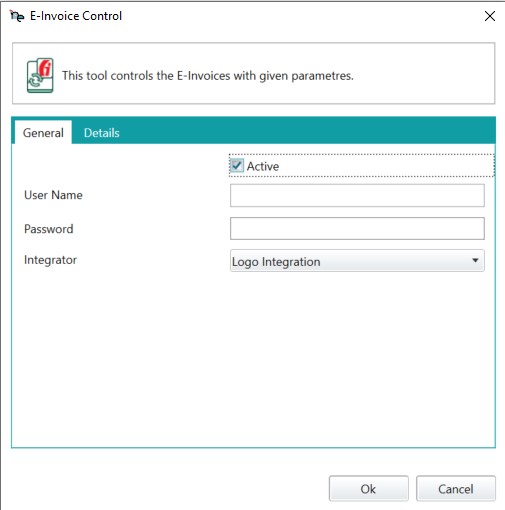

All processes should contain at least one initiation point and action. Even if they are multiple actions in the same type, operations might contain initiation action.

Manual initiation corresponds to the initiation point listed on the left side of th Web Interface. Manual Initiation process which is probably the most frequently used initiation action enables users to create a copy of the process on the navigation bar on the left side of Web Interface. The designer can use multiple Manual Initiation actions to start the process from different points.
Uncheck this box to temporarily disable / disable the initiation point. Check the Activated box to re-enable.
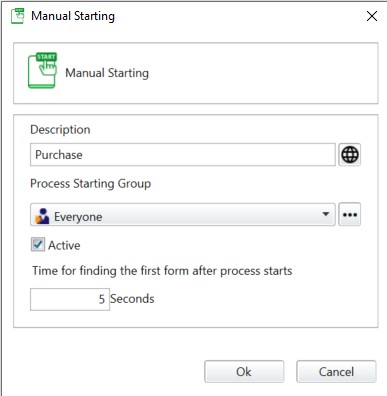
Iterative initiation action creates and initiates the process copy periodically or based on a specific calendar. Operations can be created at the end of the month, on a specific anniversary date, or based on various types of business calendars.
It determines the time that will pass between the creation of process phase states. For detailed information, refer to the Determining Delays on the page 39.
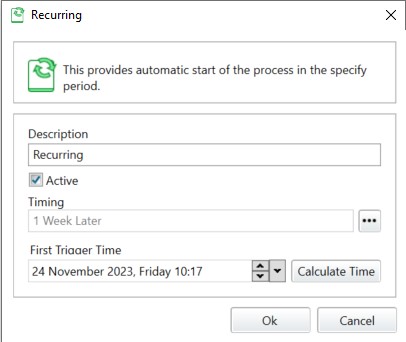
It uses an SQL (database query language) query sequence scanning the data source to find the matching records. The records found uses an SQL (database query language) query sequence scanning the data source to find the matching records. The records found are used to duplicate the process. The data queried from the data source can be used to initialize the data elements.
Briefly describes the action.
The field where the data source to be used in the update / query is selected. Data sources are created on the Web Interface by the system administrator.
It defines the level of security required to initiate the process phase state by means of the initiation action.
It determines the SQL command to be run. The command should be a “select” statement containing a clause regarding which fields will be selected from which tables. Each record taken from the system with the “Select” statement creates a process phase state.
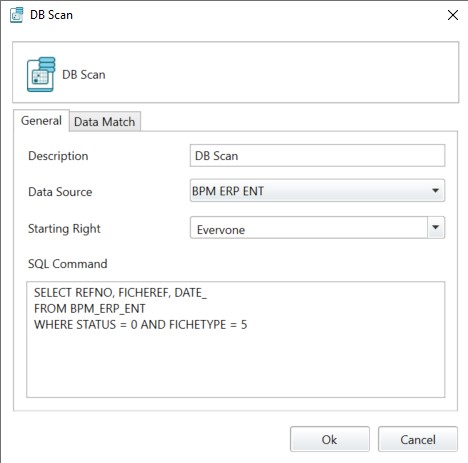
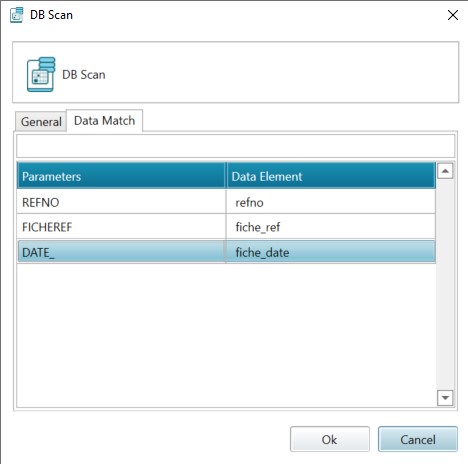
 Iterative DB Scan process works nearly in the same way that the standard DB Scan process work except that the query is run automatically in certain time periods instead of manually operating the query on the web interface. For detailed information, refer to DB Scan action.
Iterative DB Scan process works nearly in the same way that the standard DB Scan process work except that the query is run automatically in certain time periods instead of manually operating the query on the web interface. For detailed information, refer to DB Scan action.
Briefly describes the action.
The field where the data source to be used in the update / query is selected. Data sources are created on the Web Interface by the system administrator.
It determines the SQL command to be run. The command should be a “select” statement containing a clause regarding which fields will be selected from which tables. Each record taken from the system with the “Select” statement creates a process phase state.
Determines the frequency to perform the database scan process. For detailed information regarding the timing, refer to the Determining Delays on the page 39.
Indicates the next time scheduled to run the Database Scan process.Click on Recalculate in order to calculate the next initiation date for th system depending on the duration.
This option determines whether Iterative DB Scan process runs as planned or not. Uncheck this option to temporarily disable the scanning process.
It is the section where the values received / read with the “SELECT” statement are matched with the corresponding data elements. You should select the data element on the right side which you will match with the parameter on the left side by using result matching screen.
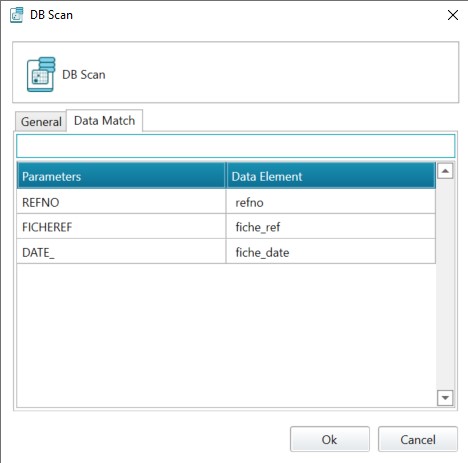
It is the location where the name of the component is stated.
You should insert the port given by the administrators of the mail server that you are using.
The address over which you want to receive the mails to trigger the process on the system should be written on this field.
It is the field where the password of the mail address written on the user name is stated.
Determines the frequency of the e-mail control.
The following fields are matched with the corresponding data elements in the E-Flow.
This field requiring the e-mail date detail should be matched with the date variable.
This field string which shows the e-mail subject information should be matched with a variable.
This field string which shows the e-mail address information should be matched with a variable.
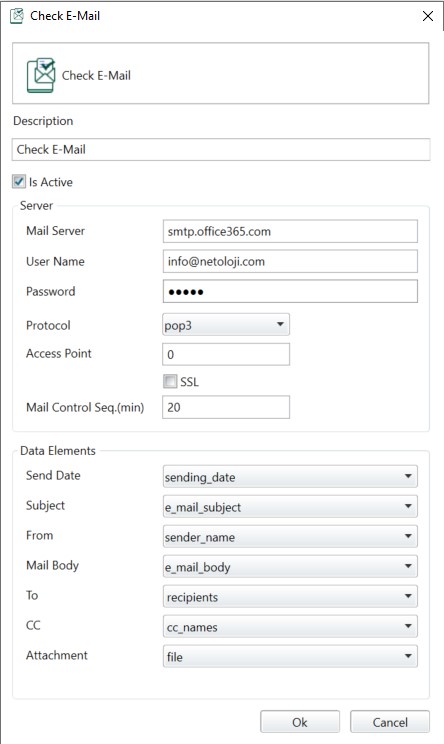
As an initiation action, Tiger Control enables the process to be triggered in E-Flow when the relevant tag is inserted in the Tiger.
It shows the tag types that can bring data in Tiger.
It is the field that shows from which firm that the intended data will be brought on Tiger.
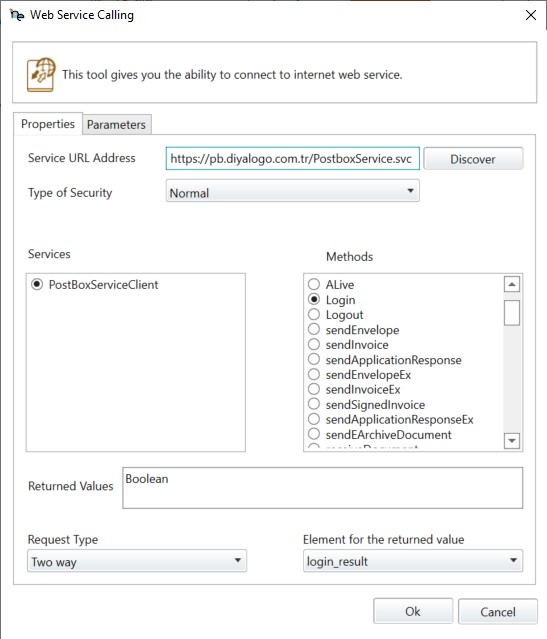
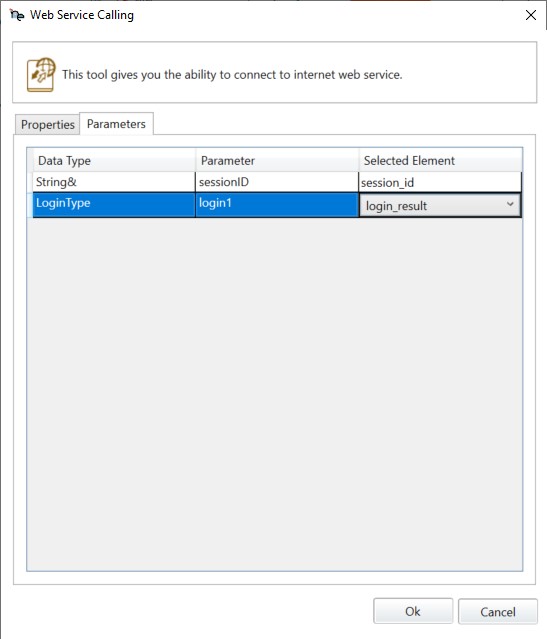
It is the user name information provided by the E-invoice integrator.
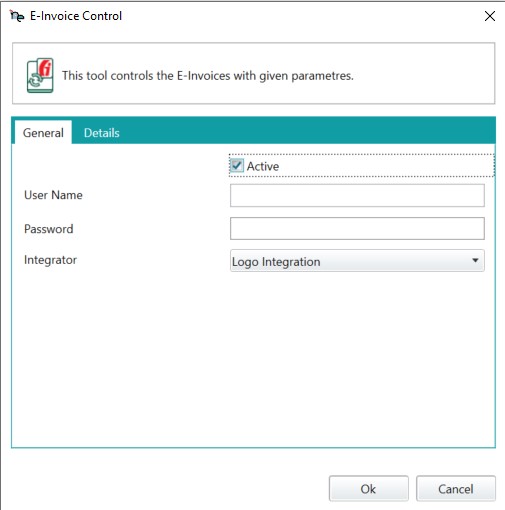
E-Invoice field that should be matched with a memo variable. It brings the ubl format of the E-invoice.
It shows the first invoice date in the E-invoice list to be brought.
